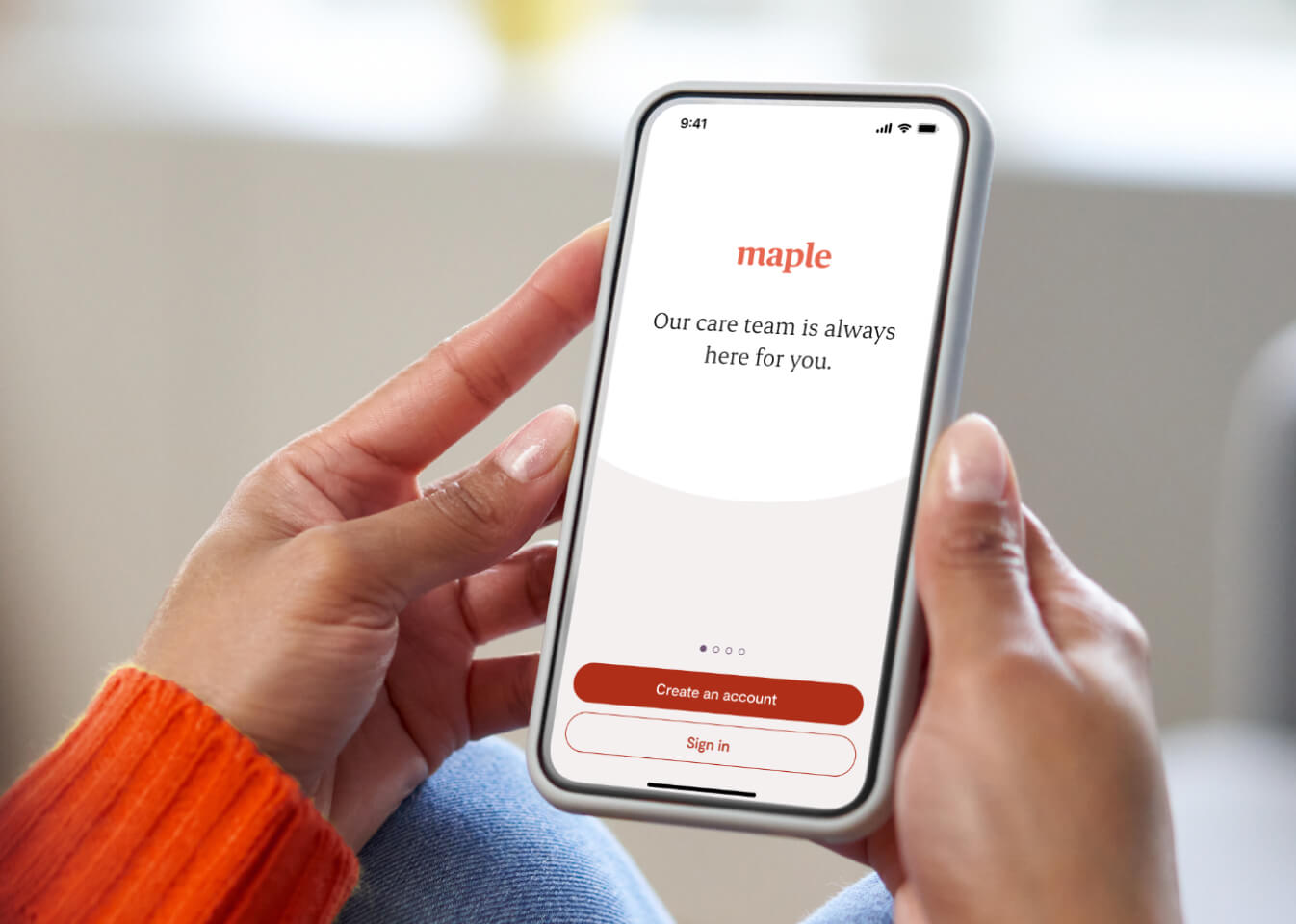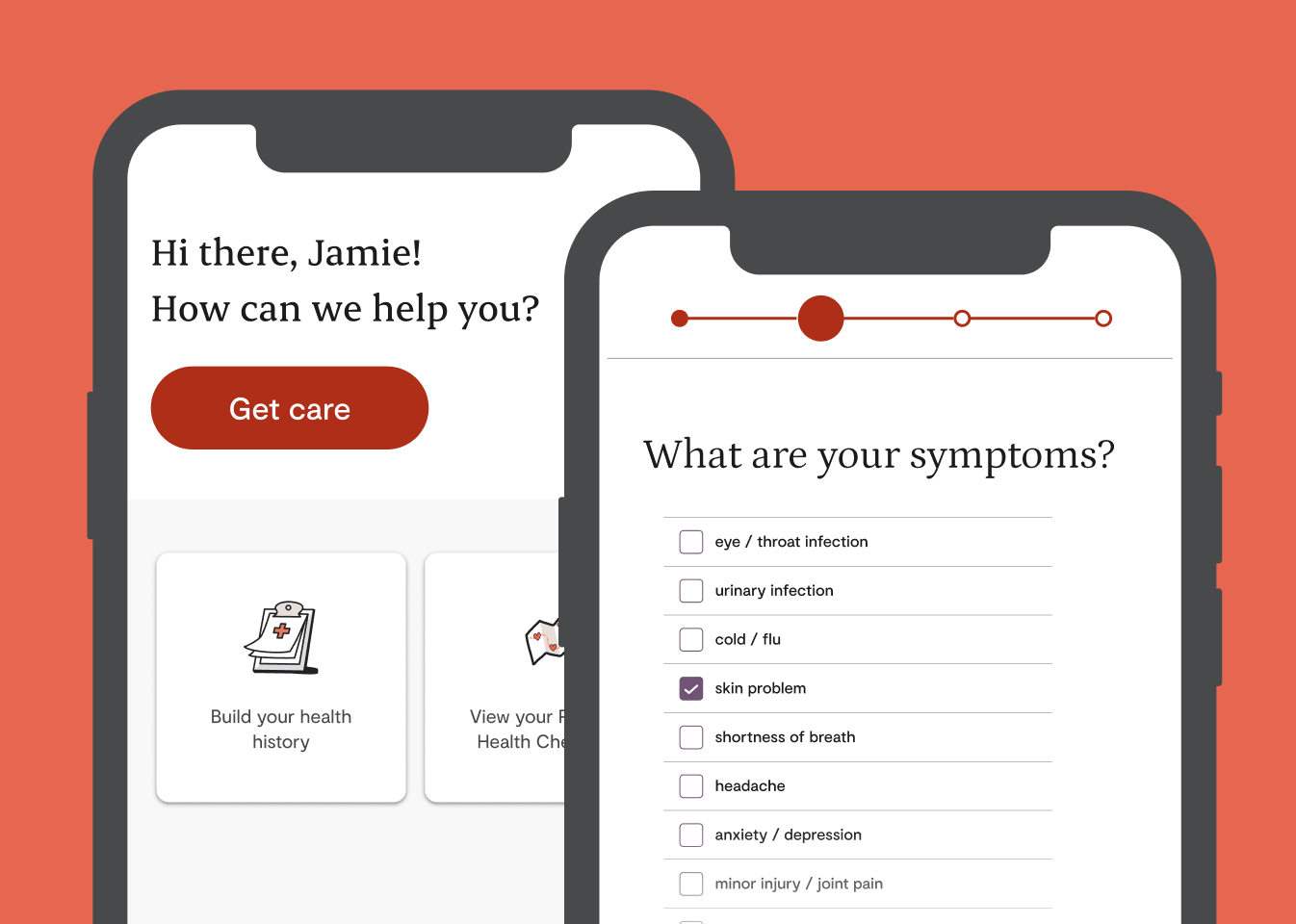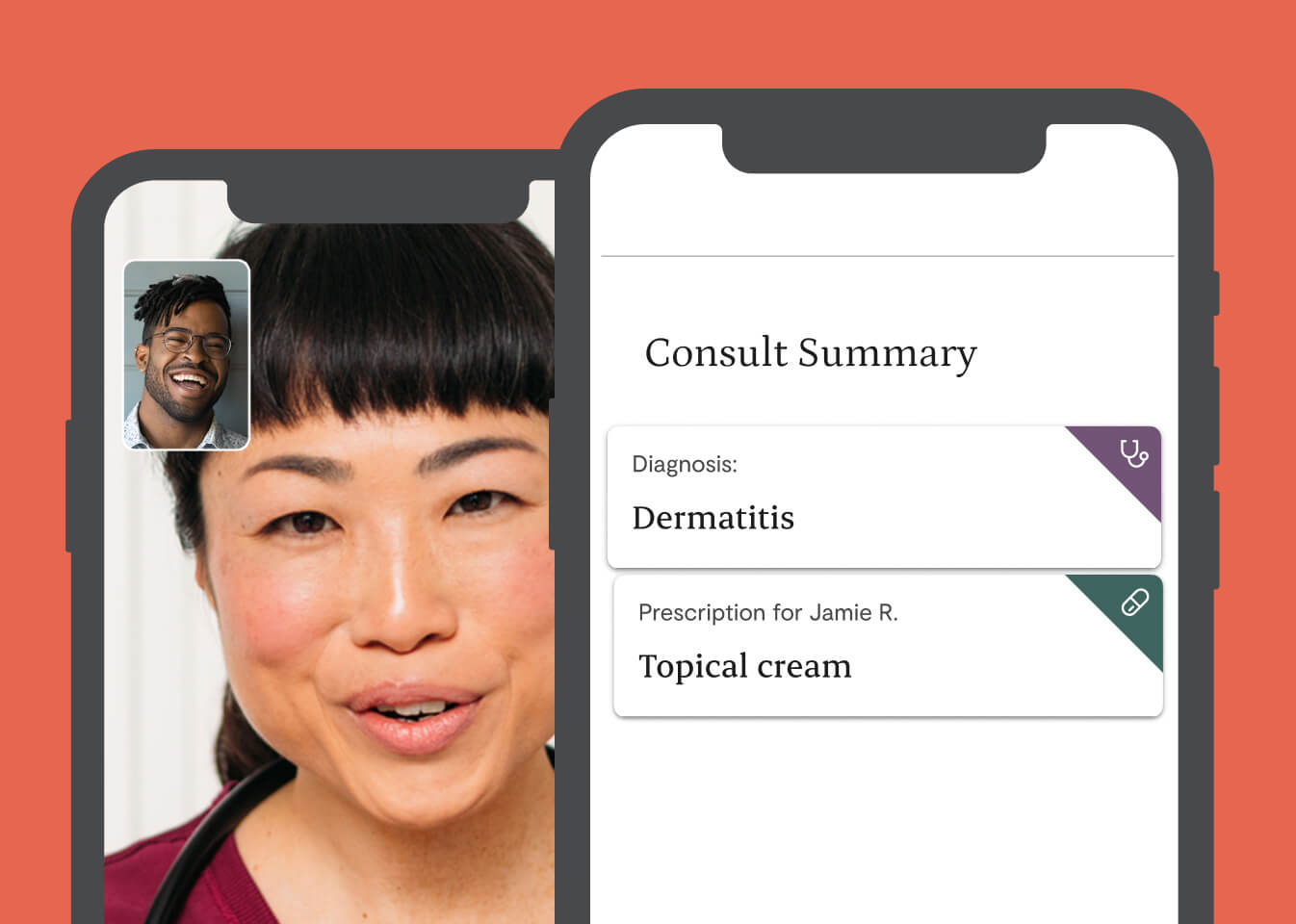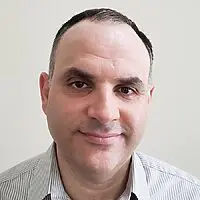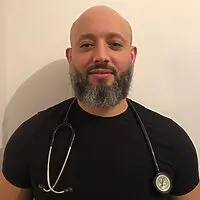Panic attack & disorder treatment, diagnosis & prescriptions
Skip the waiting room! Instantly connect with Canadian doctors for medical care from your phone, tablet or computer - any time, 24/7.

- Prescriptions available at a provider's discretion
- Speak to a doctor or nurse practitioner
- 24/7 availability
- Get connected in minutes
Trusted by millions of Canadians
- 4.8 rating30K+ App Store reviews
- 4.7 score8K+ Trustpilot reviews
Talk to a doctor about panic attack treatment online
See a doctor or nurse practitioner today to get a new prescription or refill, at their discretion.
See a provider in three easy steps.
- 1
Register and become a member

- 2
Select the “Get care” button on our homepage

- 3
Connect with a Canadian-licensed doctor or nurse practitioner in minutes

Why Canadians love Maple
A fantastic way to get medical advice when you are unable to see someone in person. The app is so simple to use. Highly recommend. I am not a tech savvy person but the doctor was kind enough to patiently walk me through every step of the process. Thank you.
Saved me hours waiting in the ER.
Fast and effective tool for getting a diagnosis and prescription.
The doctor willingly took the time to explain things to me.
Very easy to book a therapist and get appointment receipts.
Frequently asked questions
About Panic Attack
Yes. You can speak to a doctor on Maple if you believe you’ve experienced a panic attack.
In some cases, the doctor may offer some recommendations on how to manage panic attacks after evaluating your condition and symptoms. They will also potentially request additional testing at a clinic to confirm the diagnosis.
The additional tests could include:
- A thorough physical exam
- Tests on your heart and thyroid gland, as other conditions involving these two areas can cause similar symptoms
A psychological evaluation to determine possible panic attack triggers
Yes. Our physicians can prescribe medications online during your consultation. Once you accept a prescription, you’ll have the option to pick it up from any pharmacy or to have it delivered to your door at no additional cost.
You can visit our How it works page to learn more.
A panic attack is a sudden onset of intense fear or anxiety that can trigger severe psychosomatic responses – physical reactions triggered by the mental state.
These can be quite frightening, as they can lead some people to believe that they’re having a heart attack or even dying.
Most people will experience at least one panic attack in their lifetime. This is normal, and can vary in severity depending on the mental issues or situational stress that causes the panic attack symptoms.
Panic disorder occurs when a person begins to experience unexpected or recurrent panic attacks, or lives in chronic fear of having more panic attacks. Panic disorder symptoms are typically the same as those experienced with panic attacks.
There are many variations and levels of severity associated with having a panic attack. Different people may experience these attacks in different ways.
Common panic attack symptoms include:
- Chills or sweating
- Headache
- Sudden onset nausea
- Sense of impending danger or doom
- Chest pain
- Rapid or pounding heartbeat
- Fear of death or loss of control
- Chest pain or tightness
- Abdominal cramps
- Dizziness
- Fainting
- Tingling or numbness
- Shortness of breath
- Tremors
- Hot flashes
- Feeling detached from reality
Because panic disorder is essentially a chronic or recurrent set of panic attacks, panic disorder symptoms are often the same as panic attacks.
In addition to the panic attack symptoms listed above, those experiencing panic disorder may continue experiencing a chronic, lingering sense of dread or fear, as they become fixated on attacks that haven’t yet happened. If left untreated, this can have a serious negative impact on their quality of life.
At this time, it’s still unclear what direct panic attack causes trigger the attacks. However, several factors are believed to contribute to them and increase the risks of having a panic attack. These include:
- High stress situations
- Chronic stress
- Genetics
- Temperament that is prone to negative reactions or emotions
- Changes in brain function
Yes. In many cases, panic attack treatment can help reduce or eliminate panic attacks. In severe cases, this may require panic attack medication, like SSRIs, SNRIs or benzodiazepines, or ongoing psychotherapy sessions.
Panic disorder is considered an anxiety disorder and a mental illness, so the condition could return if the outside factors that caused the condition in the first place also return.
Your doctor may want to schedule regular evaluations to monitor your emotional state and discuss panic attack breathing exercises and other self-regulating panic attack prevention techniques to help combat future attacks.
The two most common forms of panic disorder treatment involve medications or on-going psychotherapy.
Psychotherapy, also called “talk therapy”, is considered a very effective panic disorder and panic attack treatment. Typically, the treatment involves the therapist helping patients recreate panic attack symptoms in a safe and controlled environment so that they can learn how to cope and control those emotions. This can also have the benefit of helping patients overcome the fears or anxieties that function as panic attack triggers.
While there is no guaranteed method to prevent a panic attack, certain techniques can be used to help minimize symptoms when dealing with panic attacks. Some of these include:
- Using muscle relaxation or meditation techniques
- Deep breathing exercises
- Closing your eyes to reduce outside stimuli
- Recognizing and acknowledging that you’re having a panic attack
- Focusing on an object to distract your mind from your fears
- Performing light exercise to reduce nervous energy
- Taking prescribed medication, preferably ahead of time if you believe a panic attack is imminent
- Practicing mindfulness and focusing on the world around you to avoid feeling detached from the reality
- Repeating a calming mantra or phrase
- Keeping calming scents nearby, like lavender, lemon, or rosemary.
While panic attack symptoms and anxiety attack symptoms are very similar, the biggest difference between the two is that an anxiety attack is directly related to an existing stressor, while a panic attack can come on completely unprovoked.
This makes panic attack triggers somewhat less predictable and more intense, as there is little to no warning before they begin. Expected panic attacks cued by outside stressors do exist, but they’re typically associated with severe phobias.
Maple 101
Maple is a virtual care platform that connects you with doctors and other healthcare providers via text, audio, or video. After you log in to your Maple account, you can request an online consultation.
Consultations work similarly to in-person appointments — the doctor can complete an assessment by asking questions about your symptoms, going through your health history, and determining what treatment is right for you. If they think your condition is more serious, they may tell you to go to a clinic for an in-person examination.
As a Maple member, you get 24/7 access to virtual primary care online and more. You can connect with our network of providers via text, audio, or video call within minutes.
Pricing and Payment
Our membership costs $85/month and covers virtual care for patients and their families, including the primary account holder's spouse and any dependents.
For patients in eligible provinces, our membership includes:
- Access to daily primary care provider visits: One daily visit with a primary care provider for each family member in their household.
- Paediatric care: Covered paediatric primary care visits, available by appointment.
- Second medical opinions: access to a network of experts for a second opinion if diagnosed with a complex condition (e.g. cancer).
- Personal Health Check-Ins: A series of personalized, evidence-based proactive care screenings to maintain and improve health.
- iCBT courses: Access to iCBT (internet-based cognitive behavioural therapy) self-assessment and courses.
- Access to specialists in eligible provinces: Easy access to specialists on Maple within days, not months. No referral is needed.
- Specialist referrals in eligible provinces: Ability to be referred to a physician specialist for in-person care, if needed.
- Credit discounts: An $80 credit per month to be applied to a Maple specialist visit.
Please note that our membership cannot be combined with other offerings, such as private insurance coverage and provincial programs, where available. In some cases, membership fees can be covered by a Healthcare Spending Account (HSA) — check with your HSA provider for more details.
We accept all major credit cards, including AMEX cards, as well as Google and Apple Pay.
Security and Privacy
At Maple, we proudly prioritize privacy as a cornerstone of our virtual care services. We strictly adhere to privacy and healthcare legislation in Canada, such as PIPEDA and PHIPA regulations, to ensure patients' personal and health information remains completely private and safeguarded.
Our policies and consent processes are designed to be simple and easily understood, empowering individuals with control and a clear understanding of their healthcare journey. When using our services, a patient’s session is protected by a comprehensive security infrastructure and stringent data policies.
Patients also retain full control of their personal health information, medical records and test results at all times. Our approach is reinforced by consultations with leading experts, guaranteeing comprehensive policy frameworks that are reviewed at a regular cadence.
All providers delivering healthcare through Maple are licensed in Canada and governed by their licensing regulatory colleges, and in all instances, must act in accordance with the governing principles set out in the telemedicine policies of each medical regulator in the applicable province.
Regulators across Canada support and recognize the value of services like ours, and the way in which they can benefit patients, physicians, and Canada’s broader healthcare system by improving access to care and increasing efficiencies in the delivery of care.
Do you need medical care today?
Trusted, experienced doctors and nurse practitioners are ready to see you.
Maple is safe and effective for common non-emergency issues. If you believe you are experiencing an emergency, please call 911 or proceed to your nearest emergency room.
